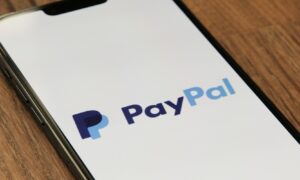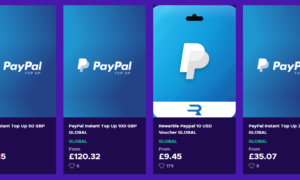Welcome to the cashless revolution! In a world where convenience and speed reign supreme, traditional methods of payment are swiftly giving way to innovative FinTech solutions. Whether you’re tapping your phone at a coffee shop or making a quick online purchase with just a few clicks, it’s becoming increasingly clear that cash is no longer king. Join us as we dive into the dynamic landscape of top FinTech payment solutions, exploring their incredible potential and inspiring possibilities for the future. Get ready to embrace the digital era, where transactions are seamless, secure, and undeniably captivating.
Introduction to the FinTech industry
As the world increasingly moves towards a cashless society, FinTech payment solutions are becoming more and more popular. But what is FinTech, and how will it shape the future of payments?
FinTech, short for financial technology, is a rapidly growing industry that uses technology to provide financial services and products. This can include anything from mobile banking and online investing to peer-to-peer lending and cryptocurrency.
The global FinTech industry is expected to be worth $309 billion by 2022, up from $105 billion in 2015, according to research firm Statista. And it’s not just large corporations that are getting in on the action – startups are also playing a big role in shaping the future of finance.
There are many different FinTech payment solutions available, each with its own advantages and disadvantages. For example, PayPal is one of the most popular options for online payments, but it charges fees for some transactions. Bitcoin, on the other hand, is a decentralized cryptocurrency that can be used for peer-to-peer payments without any fees.
The important thing to remember is that no single solution is perfect for everyone. It’s important to evaluate your needs and choose the right solution for you. With so many options available, there’s sure to be a FinTech payment solution that’s perfect for you.
Major Payment Solutions in the FinTech Space
In a rapidly developing digital world, cash is increasingly becoming a thing of the past. Financial technology (FinTech) is playing a major role in this shift, with a range of new payment solutions that are making it easier than ever to go cashless.
One of the most popular FinTech payment solutions is mobile payments. This allows users to make payments using their smartphone or other mobile device. Mobile payments are growing in popularity as they offer a convenient and secure way to pay for goods and services.
Another popular FinTech payment solution is peer-to-peer (P2P) payments. This allows users to send and receive money without the need for a bank or other financial institution. P2P payments are typically fast and convenient, making them ideal for everything from splitting the bill with friends to paying for goods and services online.
Digital wallets are another type of FinTech payment solution that is gaining traction. A digital wallet stores your payment information in one place, making it easy to make payments online or in-store without having to carry around physical cards or cash. Apple Pay, Google Pay, and PayPal are all examples of digital wallets.
Cryptocurrency is another emerging area of FinTech that offers potential as a payment solution. Cryptocurrency is a digital or virtual currency that uses cryptography to secure its transactions. Bitcoin, Litecoin, and Ethereum are some of the most well-known cryptocurrencies. While cryptocurrency is still relatively new and somewhat volatile, it has the potential to revolutionize the payments landscape.
Finally, automated clearing houses (ACH) are becoming popular as an alternative way to make payments. ACH payments are electronic transfers of money from one account to another, and they are often used for recurring bills such as rent or utility payments. They can also be used for one-time payments such as online purchases or bill payment.
Pros and Cons of Going Cashless and Outlining the Prospects
As we move ever closer to a cashless society, it’s important to evaluate the pros and cons of different payment solutions. In this blog post, we’ll take a look at the prospects of some of the top FinTech payment solutions out there.
On the plus side, going cashless has a lot of advantages. It’s more convenient for consumers and businesses alike, and can even help to reduce crime. What’s more, with the advent of mobile payments and other technological innovations, it’s becoming easier and more convenient to go cashless.
However, there are also some drawbacks to consider. For one thing, cashless payments can be less secure than traditional methods like cash or checks. Additionally, they can be subject to fees and other charges that may not be applicable to other payment methods. Not everyone is comfortable with going completely cashless; some people still prefer the anonymity and security of using physical currency.
The pros outweigh the cons when it comes to going cashless. With the right technology in place, going cashless can be a convenient, safe, and affordable way to pay for goods and services.
The Impact of Going Cashless on Different Sectors
With the advent of new technologies, the way we make payments is changing. From cashless cultures like Sweden to mobile payment apps like Venmo, it’s clear that the future of payments is cashless. But what does this mean for different sectors?
In developed economies, going cashless can have a profound impact on crime. According to a report from the Economist Intelligence Unit, “countries where notes and coins are used less frequently have lower rates of money laundering and organized crime.” This is because it’s harder to hide or transport large sums of cash when there is no physical money involved.
For businesses, going cashless can also be a major boon. A study by Mastercard found that businesses that adopt cashless payment methods see “39% higher annual revenue growth” than those who don’t. This is because customers tend to spend more when they’re using electronic methods of payment, as opposed to cash.
There are also social implications of going cashless. In developing countries, for example, going cashless can provide financial inclusion for those who don’t have access to traditional banking services. And in all countries, going cashless can help reduce corruption, as it’s harder to bribe someone when there is no paper money involved.
The move towards a cashless future seems inevitable. And while there may be some challenges along the way, the benefits seem to outweigh the disadvantages for both individuals and businesses alike.
Potential Security Challenges with a Cashless System
A cashless society has many potential benefits, but it also comes with some potential security challenges. One of the most significant challenges is the increased risk of fraud and cybercrime.
When transactions are conducted electronically, there is a greater risk of identity theft and other forms of fraud. Hackers may target financial institutions or individual consumers in an attempt to steal sensitive information or money. In addition, criminals may find new ways to exploit the cashless system to their advantage.
Another potential challenge is the loss of privacy that comes with a cashless society. If all financial transactions are conducted electronically, businesses and institutions will have a lot of data about our spending habits and patterns. This could be used for marketing purposes or even to track our movements.
There is the issue of dependence on technology. A cashless society would rely heavily on electronic systems and infrastructure. What happens if there is a power outage or an interruption in service? How would people access their money? These are all valid concerns that need to be considered before moving to a cashless society.
How Governments are Responding to the Shift Towards Cashless Payments
In recent years, we have seen a dramatic shift away from cash and check payments towards electronic and digital payment methods. This trend is being driven by the increasing popularity of mobile devices and the rise of FinTech companies that are making it easier than ever to pay for goods and services without using cash.
As this shift away from cash continues, governments around the world are starting to take notice. In some countries, like Sweden, the government is encouraging the use of cashless payments by offering incentives to businesses that accept them. In other countries, like China, the government is cracking down on cash payments in an effort to reduce tax evasion and money laundering.
In the United States, there are a number of initiatives being put in place by both the federal and state governments to promote the use of cashless payments. The US Small Business Administration has set up “cashless challenge” grants that provide financial assistance to small businesses that accept digital payments. Additionally, some states have passed laws making it easier for mobile technologies to be used for payment processing.
Overall, governments around the world are recognizing that cash is becoming increasingly obsolete and are actively taking steps to encourage the adoption of digital payments.
Conclusion
It is clear from this analysis that the future of payments will be heavily influenced by FinTech payment solutions. Whether it’s conventional banking services, cryptocurrencies, blockchain technology or even something we haven’t yet imagined, people today are hungry for new and innovative ways to make their transactions more efficient and secure. With so many different options now on offer, there is no limit to how far we can push the boundaries of a cashless society and what possibilities lie ahead in our digital future.



































